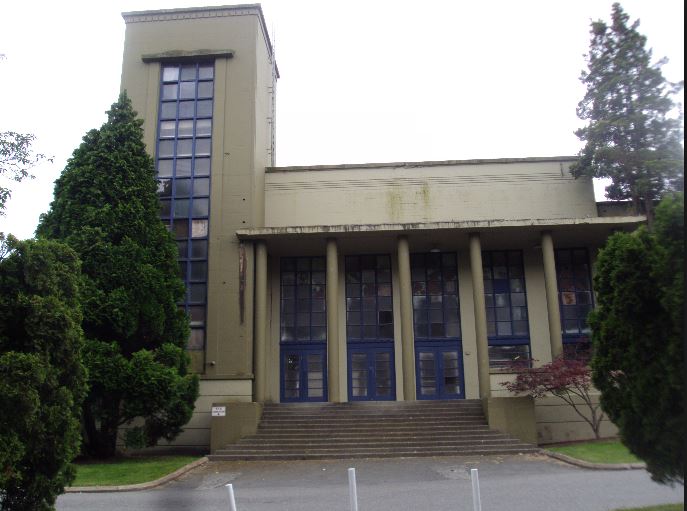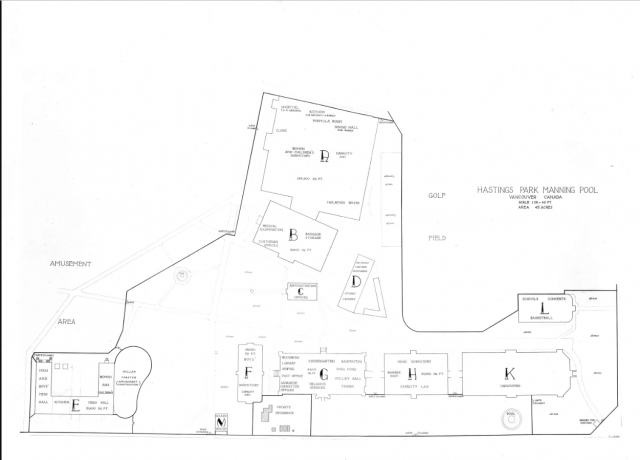“Straight as a plummet the steak of red below the long streak of white dropped for fully 100 feet. Then with a couple of preliminary flutters, the rushing air entered the distending ring of the parachute and it opened like a huge umbrella. A great sigh of relief went up from the 6,000 and some odd pairs of eyes who were watching the daring feat.”
The World, May 25, 1912.
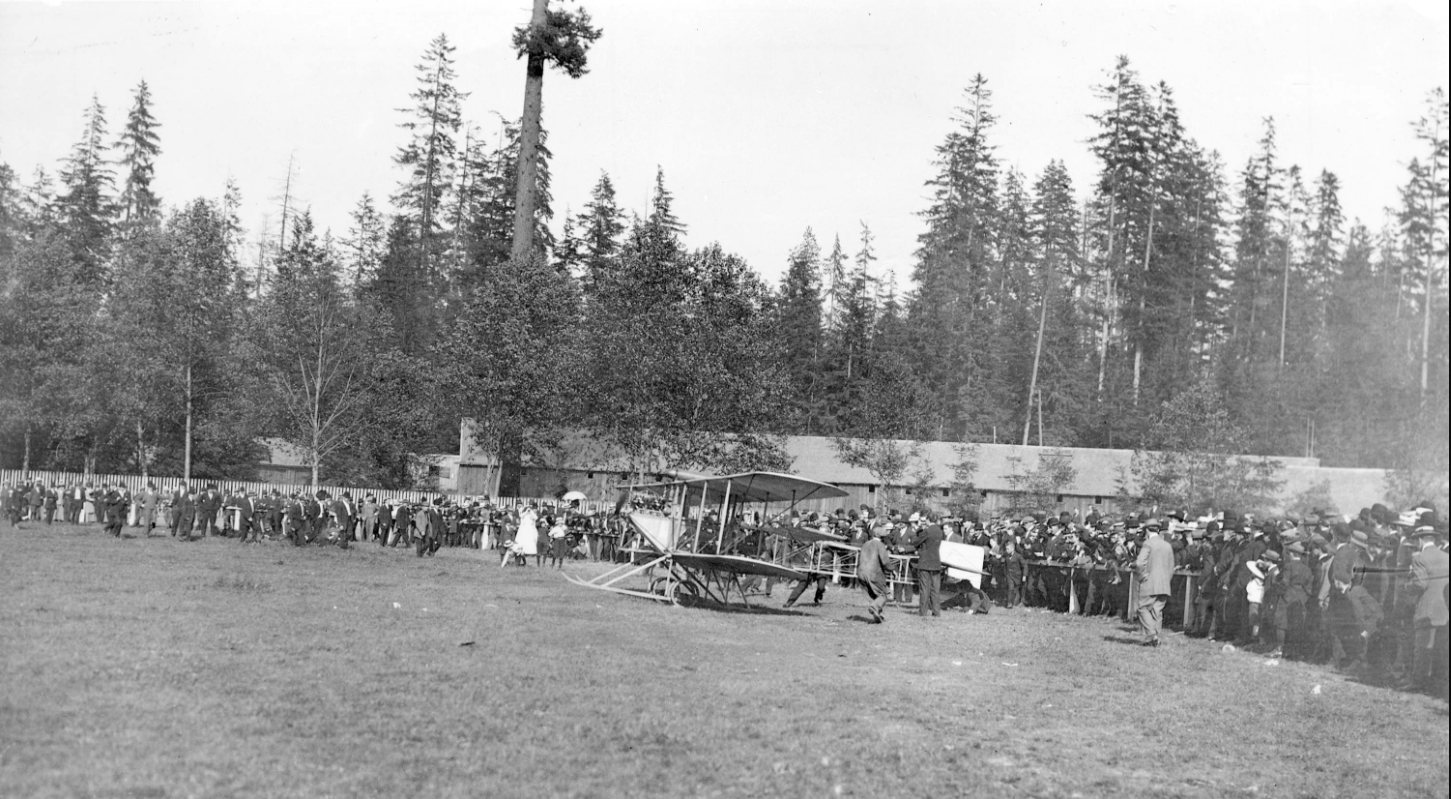
“Professor” Charles Saunders made this jump from a Wright bi-plane in 1912 wearing red tights and a large leather helmet. It was the first parachute drop in Canada and only the fourth in the world.
According to the The British Columbia Historical Quarterly of October 1939, the folded parachute was put into a makeshift container made from a large empty can which was bound to one of the skids of the plane. Apparently “disaster was averted” on take-off as pilot, Phil Parmelee, just missed the tree-tops at Hastings Park. Parmelee circled around Burrard Inlet until he got to a height of around 1,000 feet and Saunders climbed down and hung from the machine.
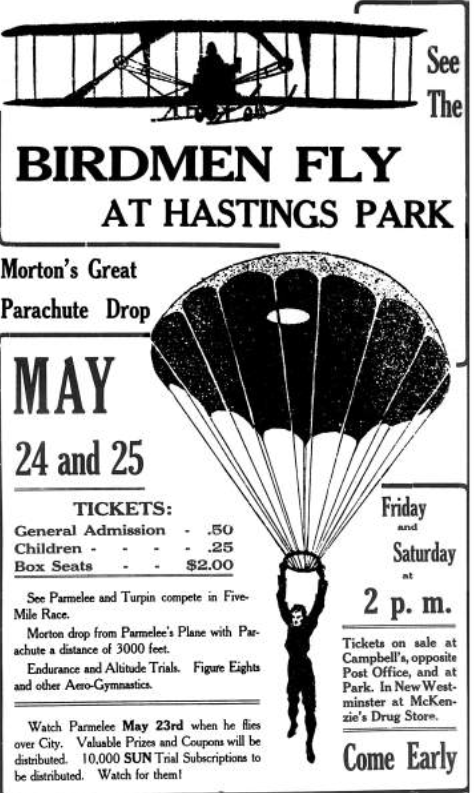
There wasn’t any safety harnesses in those days, he had to just hang onto the parachute and hope to god it worked. Or as the Journal put it: “The method then in vogue was to trust to a strong pair of hands and arms, by which the courageous jumper grasped the bar attached to the parachute. His own strong muscles were all he relied upon to forestall a sudden trip to eternity.”
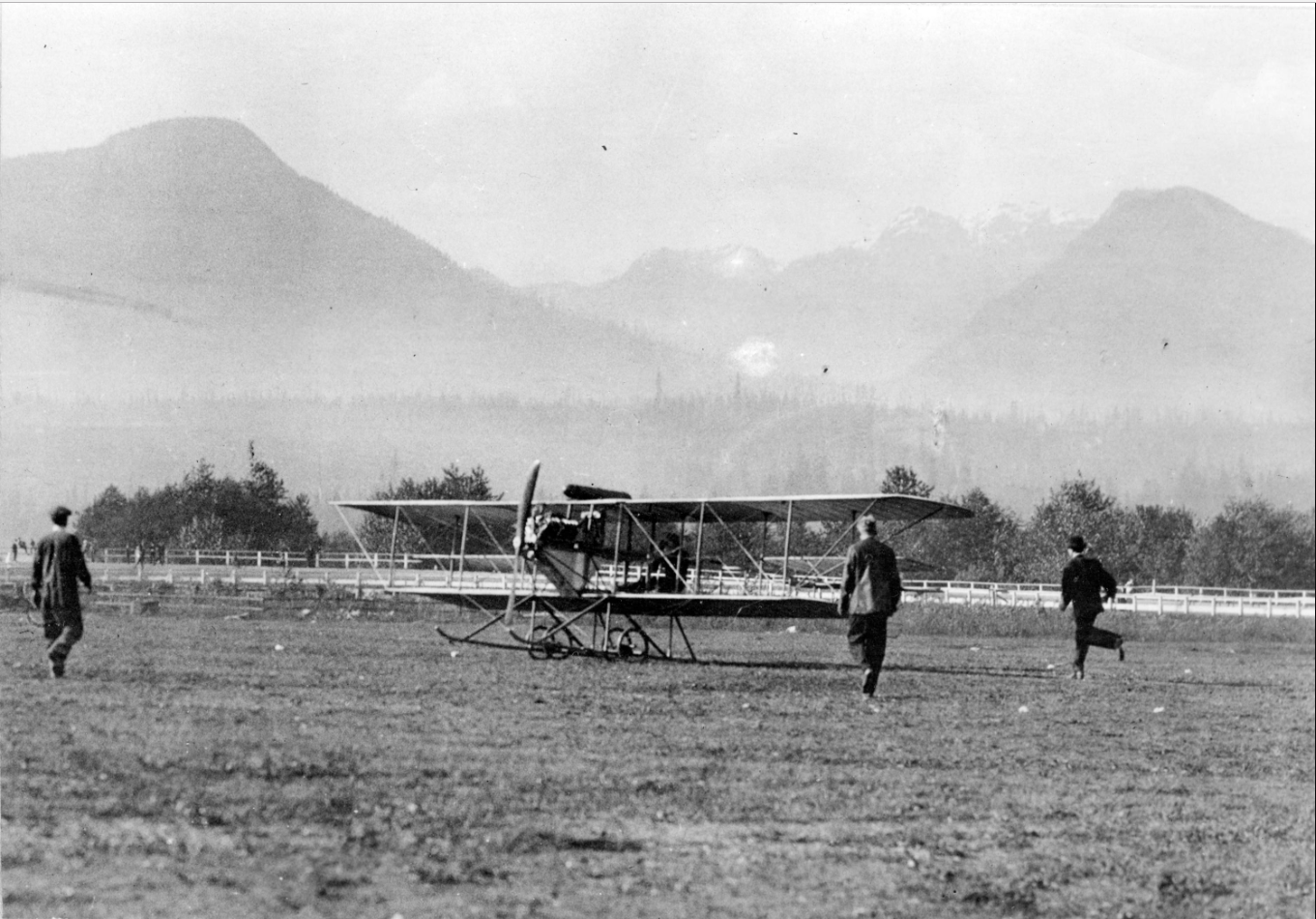
The “Professor” landed on the North Shore in the middle of a couple of hundred stunned picnickers. He calmly rolled up his parachute and waited for a power boat which he had charted to take him back to Hastings Park.
Parmelee died a week later in Washington State, when turbulence flipped the plane he was flying upside down. He was 25.
© All rights reserved. Unless otherwise indicated, all blog content copyright Eve Lazarus.



